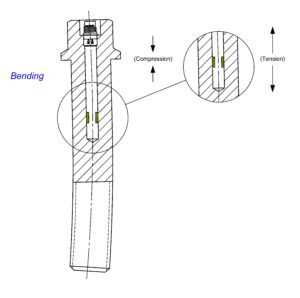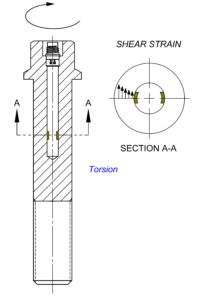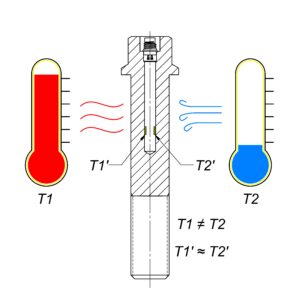Internal Strain Gaging Minimizes Force Measurement Errors
How does internal strain gaging minimize force measurement errors in Bolts and Studs used for preload and clamping force measurement? Strainsert Force Sensing Bolts and Studs are designed and manufactured using our patented internal strain gaging techniques, where strain gages are bonded directly to the host material along the neutral axis.
This installation minimizes error from bending loads, torsion loads, temperature gradients, and environmental effects. Applications for Strainsert Bolts and Studs are often found in the Aerospace, Military, Marine, Automotive, and Construction industries.
Please contact us to discuss solutions to your specific application and fastener measurement needs.
Minimizing Bending Load Measurement Errors
It is not uncommon to induce a bending moment into a bolt, stud, or other tensile loaded fastener, designed for tensile load only. This can result from non-uniform components or surfaces where the bolt interfaces with the hardware.
Bending stress causes compression on one side and a tension on the other side of the device. The stresses generated between compression and tension strains are larger on the outer diameter and smaller on the inner diameter of the device. As bending stress increases, the strain difference also increases. Placing the strain gages on the inner diameter, instead of the outer diameter, minimizes the effects resulting from bending loads under preload tension.

Minimizing Torsion Load Measurement Errors
Torsion loading on bolts and studs causes additional shear strain, which can result in errors while measuring preload tension. Shear strain on a bolt or stud is maximum on its outer diameter and minimum on its inner diameter. As torsion loading increases, shear strain also increases. Placing the strain gages on the small inner diameter, instead of the outer diameter, minimizes the effects resulting from torsion loading, thereby providing for a more accurate load measurement.

Minimizing Temperature Gradient Effects
Temperature gradients between strain gages on bolts and studs can cause unwanted reading errors. As the temperature difference increases, the reading error increases. Placing the strain gages on the small inner diameter, instead of the outer diameter, minimizes temperature gradient effects resulting readings that are more stable and less temperature sensitive.

Minimizing Other Environmental Effects
Strainsert Bolts and Studs are both rugged and durable. Due to internal strain gaging, they offer a high degree of survivability in harsh field applications, wide temperature and/or pressure ranges, and rough installation/removal.
Please review information on our custom force sensing bolts and studs and contact us with any questions or for assistance in your next project.
